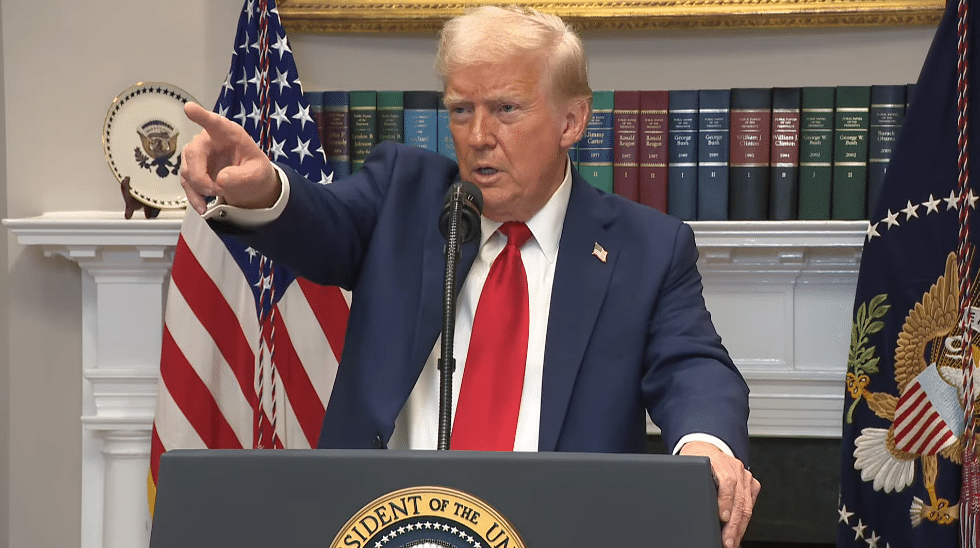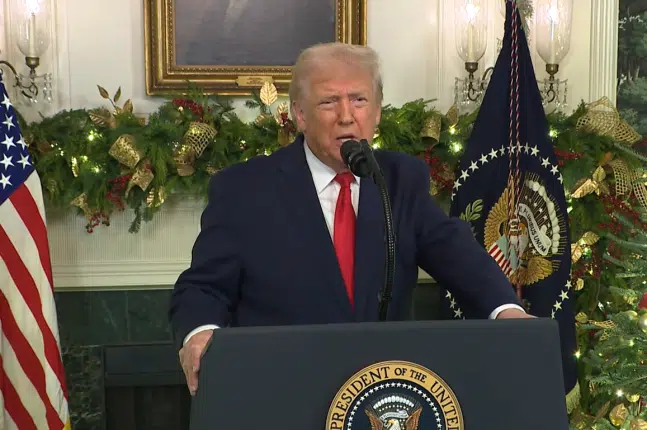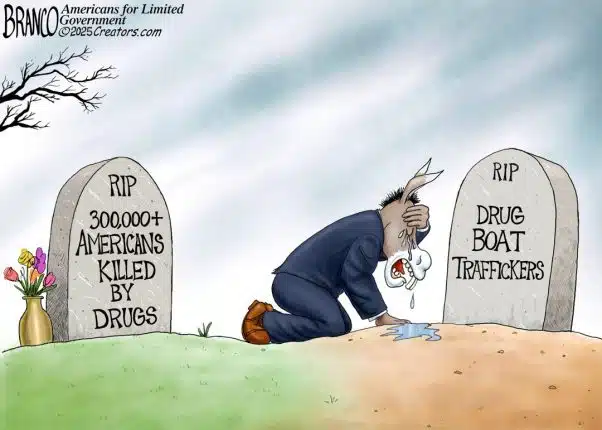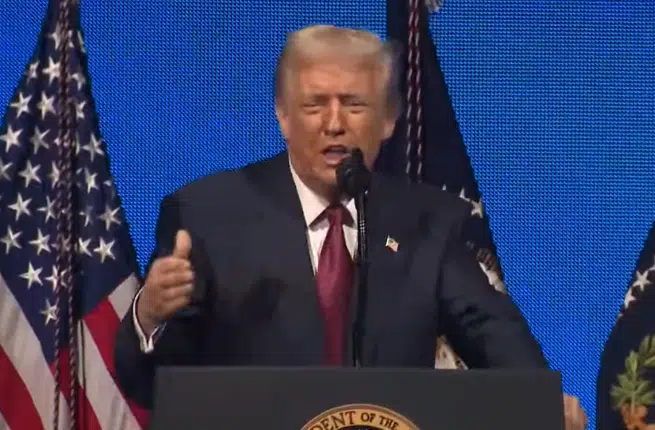
The latest weekly jobless claims reported by the Department of Labor are a reminder for Congress to extend the 2017 Trump tax cuts and then some.
In perhaps another sign that the economic cycle could be turning and that we are past peak employment, initial weekly unemployment claims increased 241,000 (18,000 more than the prior week), while continued claims — the one to really watch — also increased by 83,000 to 1.9 million.
These are by no means catastrophic numbers — yet — but they are still well worth watching. But how to tell if the economy is contracting. Looking at jobless claims as a percent change from a year ago seems highly instructive.
During every recession going back to 1969, prior to the steep but brief Covid recession, jobless claims were up an average 38.8 percent from the prior year on a sustained basis. Right now, they’re up 15 percent from a year ago for a single week.


Specifically, for the 1969 to 1970 recession, weekly jobless claims were up an average 48 percent from the prior year during the recession. During that cycle, the unemployment level increased from its September 1968 low of 2.7 million to its peak of 5.17 million in November 1971, up 2.47 million. The unemployment rate peaked at 6.1 percent in December 1970.
During the 1973 to 1975 recession, weekly jobless claims were up an average 44 percent from the prior year during the recession. Then, unemployment increased from its July 1973 low of 4.3 million to its peak of 8.4 million in May 1975, an increase of 4.1 million. The unemployment rate peaked at 7.8 percent in July 1976.
During the 1980 recession, weekly jobless claims were up an average 42.5 percent from the prior year during the recession. Then, unemployment rose from its May 1979 low of 5.8 million to its peak of 8.36 million in July 1980, an increase of 2.56 million. The unemployment rate peaked at 7.8 percent in July 1980.
During the 1981 to 1982 recession, weekly jobless claims were up an average 34 percent from the prior year during the recession. Then, unemployment rose from its December 1980 low of 7.7 million to its December 1982 peak of 12 million, an increase of 4.3 million. The unemployment rate peaked at 10.8 percent in November 1982.
During the 1990 to 1991 recession, weekly jobless claims were up an average 26 percent from the prior year during the recession. Then, unemployment rose from its March 1989 low of 6.2 million to its June 1992 peak of 10 million, an increase of 3.8 million. The unemployment rate peaked at 7.8 percent in June 1992.
During the 2001 recession, weekly jobless claims were up an average 34.9 percent from the prior year during the recession. Then, unemployment rose from its October 2000 low of 5.5 million to its peak of 9.26 million by June 2003, an increase of 3.76 million. The unemployment rate peaked at 6.3 percent in June 2003.
During the 2007 to 2009 recession, weekly jobless claims were up an average 42.7 percent from the prior year during the recession. Then, unemployment rose from its low of 6.73 million in March 2007 to 15.3 million in April 2010, an increase of 8.57 million. The unemployment rate peaked at 10 percent in October 2009.
And during the 2020 to 2021 Covid recession, weekly jobless claims were up an average 581 percent from the prior year during the recession, as the nation saw brief but catastrophic unemployment from the economic lockdowns. Then, unemployment rose from its low of 5.7 million in February 2020 to its April 2020 peak of 23 million, an increase of 17.3 million. The unemployment rate peaked at 14.8 percent in April 2020.

Yes, politically, this matters, particularly when unemployment is rising during an election year, as it was in 1976 (Gerald Ford lost), 1980 (Jimmy Carter lost), 1982 (Republicans lost House seats in the Congressional midterms but they likely would have anyway), 1992 (George H.W. Bush lost), 2008 (George W. Bush was term-limited but Republicans lost) and 2020 (Donald Trump lost).
Whereas, Richard Nixon, Ronald Reagan, George W. Bush and Barack Obama had recession relatively early in their terms, and all four went on to reelected easily in 1972, 1984, 2004 and 2012.
So, where are we right now? The past week, jobless claims are up 15 percent from the year prior. And in the past few years, this is nowhere near the worst number. (The week of Dec. 7, 2024 it was 17 percent, the week of Oct. 12, 2024 it was 20 percent and the week of Oct. 5, 2024 it was 23 percent. From May 23, 2023 to July 1, 2023, it averaged 17 percent.)
And, unemployment is up from its January 2023 low of 5.7 million to its current 7.08 million level as of March. It got to 7.1 million in November 2024. So, it has increased 1.3 million so far. And the unemployment rate is up to 4.2 percent from its April 2023 low of 3.4 percent.
Still, anything in the double digits of an increase in weekly jobless claims from the prior year should raise some eyebrows, and certainly anything in the 20s or 30s on a sustained basis would be a flashing red light.
And then in terms of the increase of unemployment itself, leaving aside the exceptional Covid recession, that ranged from an overall increase of 44 percent to a high 146 percent, or an average 85 percent increase.
Right now, unemployment is already up 22.8 percent from its prior low. It won’t take much, say, another 1.3 million increase in unemployment, to push unemployment into the lower range of recessions in recent history. You’re already halfway there. The important part is that the economy and labor markets have already been weakening for more than two years now following the inflation shock of 2021 and 2022, with unemployment steadily increasing since 2023.
The economic lesson of recessions, except for the 2020 Covid recession, is they generally do not happen overnight, they are usually years in the making. The political lesson when it comes to recessions is to get it over with as quickly as possible, and incumbents do not want one particularly during presidential election years.
Meaning if you are President Donald Trump and Republicans, politically, any downturn would be better sooner rather than later, especially considering the high likelihood of losing House seats in the Congressional midterms either way.
In terms of the long-term health of the economy — the most important thing regardless of political fortunes — in case we are headed for a downturn, Congress would do very well to do everything in its power to extend the 2017 Trump tax cuts, but also extend tax relief with the President’s no tax on tips, overtime and Social Security, plus factory expensing for businesses to make products here in America — positioning the economy for a solid, long-term recovery.
Robert Romano is the Executive Director of Americans for Limited Government.






